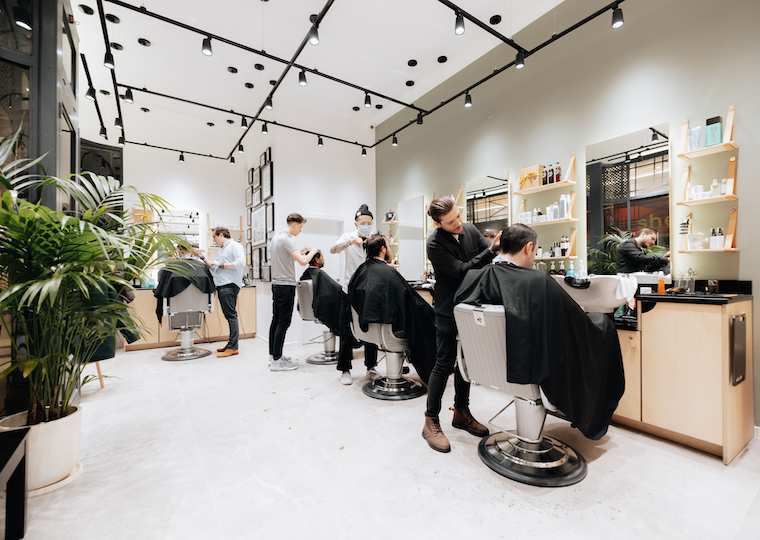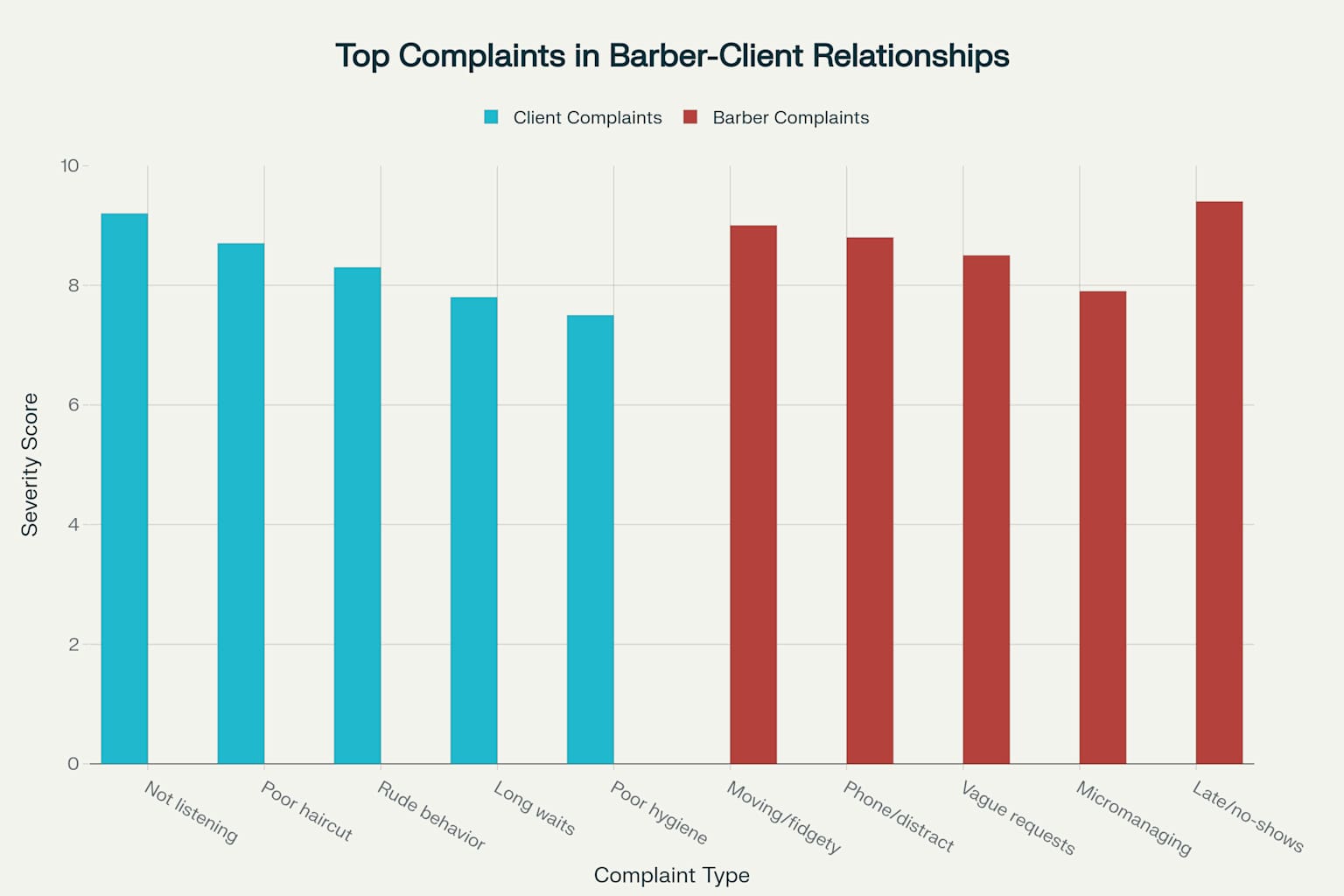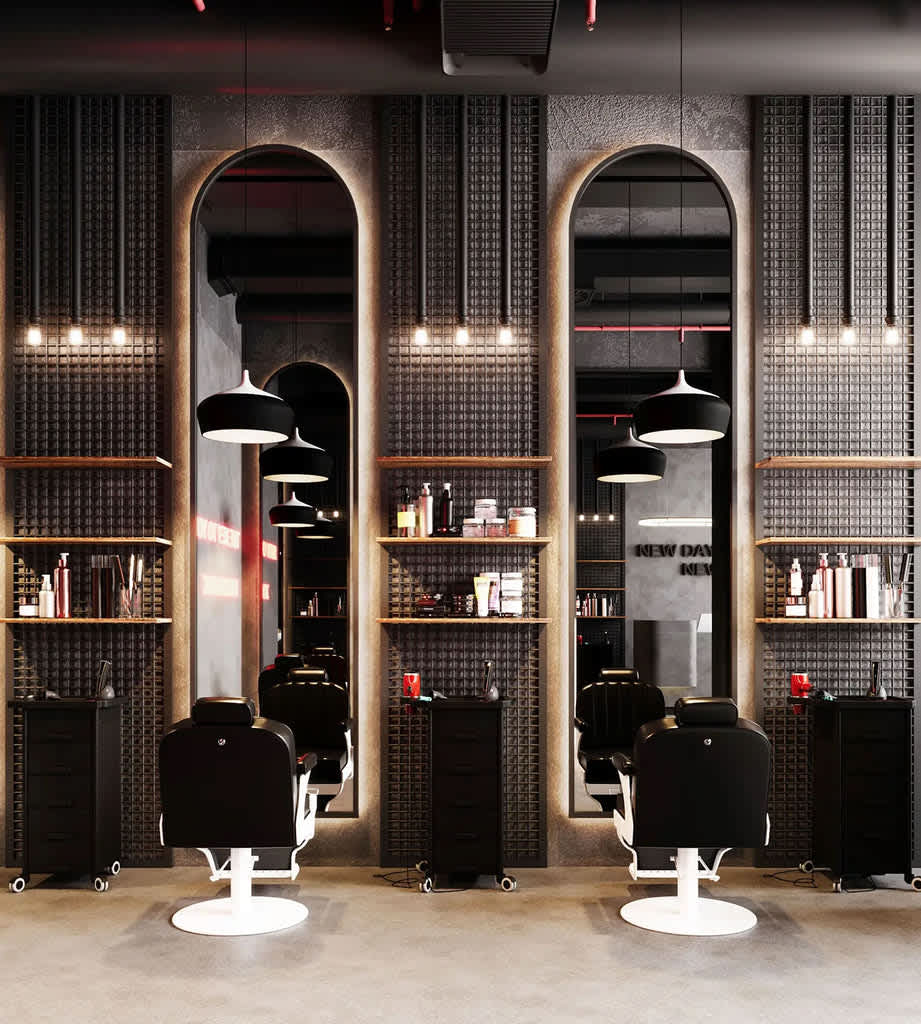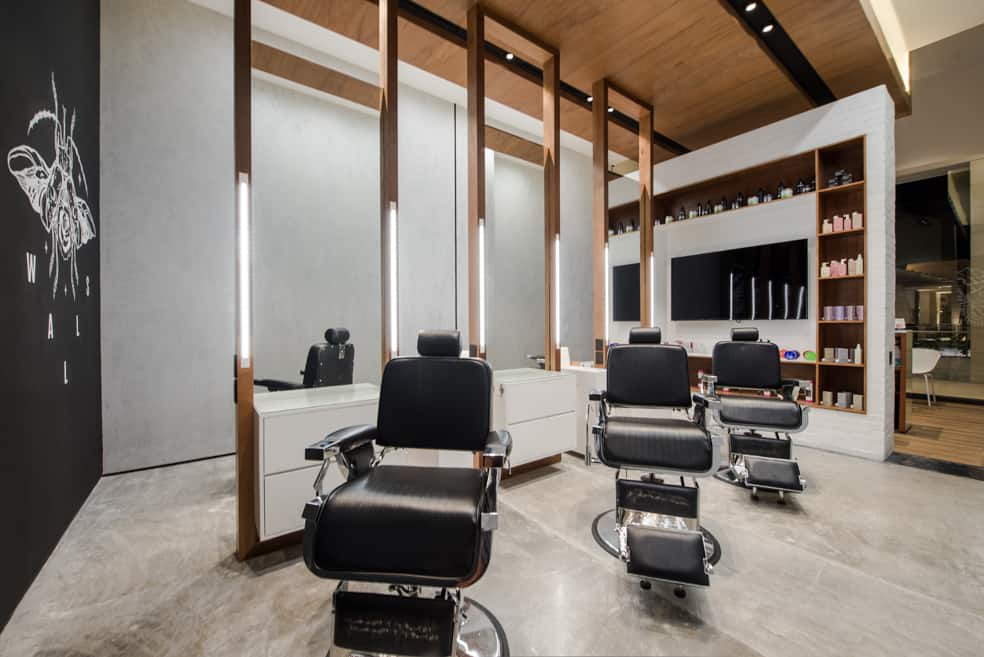TOP 5 COMPLAINTS
The Two Sides of the Chair: Understanding Client and Barber Complaints in 2025
The barbershop industry continues to thrive in 2025, with a market value of $5.8 billion and projected job growth of 7% through 2033 . However, beneath this success lies a complex relationship between barbers and clients that can make or break the customer experience. Understanding the most common complaints from both perspectives is essential for building successful barbershop businesses and maintaining client satisfaction in an increasingly competitive market.

The Current State of Barber-Client Relationships
Modern barbershops serve a diverse clientele, with men aged 18-34 representing the largest demographic group visiting barbershops regularly. The industry has evolved significantly, with 77.49% of barbershop appointments now booked online, creating new expectations for efficiency and professionalism. Yet despite technological advances, fundamental relationship challenges persist between barbers and their clients.
Research indicates that 78% of barbershop customers consider the atmosphere and experience crucial factors in their decision to visit a particular establishment. This statistic underscores the importance of addressing complaints before they escalate into lost business and negative reviews.

Top Complaints in Barber-Client Relationships
Top 5 Client Complaints About Barbers
1. Not Listening to Client Requests
The most significant frustration clients experience centers on communication breakdowns during consultations ^5. Many clients report feeling rushed through the initial discussion or having their specific preferences dismissed by barbers who think they know better. This issue has been exacerbated by the rise of AI-generated haircut images, with barbers reporting that clients increasingly bring unrealistic digital references that create impossible expectations ^7.
Effective communication is recognized as the cornerstone of successful barbering, yet consultation processes often fall short of client expectations ^8. The problem extends beyond just listening—it includes the barber's ability to translate client desires into achievable results while managing expectations appropriately.
2. Uneven or Poor Haircut Quality
Technical skill deficiencies remain a primary source of client complaints, ranging from uneven fades and missed spots to cuts that don't match the requested style ^5. These issues are particularly damaging in an industry where a single bad experience can lead to permanent client loss and negative word-of-mouth marketing.
The challenge is compounded by the fact that some haircuts don't look "right" immediately after cutting, with the hair needing time to settle and soften ^11. However, genuinely poor technical execution undermines client trust and can damage a barber's reputation permanently.
3. Rude or Unprofessional Behavior
Professional standards in barbering encompass punctuality, effective communication, customer service excellence, proper appearance, and ethical conduct ^12. When these standards slip, client satisfaction plummets rapidly. Unprofessional behavior includes being inattentive, showing disrespect, rushing through services, or creating an unwelcoming atmosphere ^6.
The barbering profession requires a delicate balance of technical skill and interpersonal abilities, with many clients seeking not just a haircut but a positive social experience ^13. Failure to meet these expectations can result in immediate client departure and negative online reviews.
4. Long Wait Times and Scheduling Issues
With the majority of appointments now booked online, clients have higher expectations for efficient scheduling and punctual service ^14. Extended wait times, double bookings, and appointments not honored on time are frequent sources of frustration, particularly when clients have busy schedules.
Research indicates that customers are generally willing to tolerate wait times of 15-30 minutes, but exceeding this threshold leads to significant dissatisfaction ^15. Survey data shows that 50% of barbershop customers cite waiting around for appointments as their biggest frustration ^14.
5. Poor Hygiene and Cleanliness
Hygiene standards are non-negotiable in the barbering industry, with state regulations requiring specific sanitation protocols ^16. Poor cleanliness includes inadequate tool sterilization, unclean workspaces, and failure to follow proper health and safety regulations. These violations can result in health risks, legal consequences, and immediate loss of client trust.

A clean and modern barbershop interior with multiple styling stations, showcasing an environment that promotes professionalism and client comfort.
The importance of maintaining a clean, professional environment cannot be overstated, as it directly impacts client comfort and perceived value of services.
Top 5 Barber Complaints About Clients
1. Moving or Not Sitting Still
The most common complaint from barbers involves clients who fidget, move their heads, or fail to maintain proper positioning during haircuts ^18. This behavior makes precision cutting extremely difficult and can result in uneven or poor-quality results that ultimately reflect poorly on the barber's skill.
Professional barbers require clients to sit still and maintain specific head positions to achieve accurate cuts, particularly for detailed work like fades and line-ups ^20. When clients constantly adjust their position or look around, it compromises the barber's ability to deliver quality service and can lead to safety concerns with sharp tools.
2. Talking on the Phone or Being Distracted
Phone use during haircuts creates multiple problems: it affects head position, disrupts communication, causes unnecessary movement, and shows disrespect for the service process ^21. Research confirms that texting can cause hair misalignment and result in uneven cuts due to improper head positioning.
When clients are distracted by devices, they cannot provide feedback about the cut in progress, leading to miscommunication and unsatisfactory results ^21. This behavior also makes it difficult for barbers to assess client satisfaction throughout the process and adjust their technique accordingly.
3. Unrealistic or Vague Instructions
Barbers frequently struggle with clients who provide unclear directions or request styles that are impossible to achieve given their hair type, face shape, or lifestyle ^18. Common problematic requests include "just clean it up," "do whatever you think looks good," or expecting to replicate celebrity hairstyles without considering individual characteristics.
The rise of social media and AI-generated images has intensified this issue, with clients bringing references that may not be realistic for their specific hair characteristics ^7. Professional barbers must balance customer desires with practical limitations while managing expectations diplomatically.
4. Micromanaging or Interrupting the Process
Some clients constantly comment, question, or attempt to direct the barber before the haircut is complete ^20. This micromanagement disrupts the barber's workflow and can lead to mistakes or inconsistent results as the professional loses focus and concentration.
Effective barbering requires systematic approach and concentration, particularly for complex techniques like fading and blending ^20. When clients interrupt this process with premature feedback or direction, it can compromise the final outcome and create stress for both parties.
5. Late Arrivals or No-Shows
Punctuality issues significantly impact barbershop operations and profitability ^18. Late arrivals disrupt carefully planned schedules, potentially affecting other clients and reducing the barber's earning potential. No-shows are particularly problematic in an appointment-based business model, representing lost revenue and wasted time.
Industry data shows this is one of the most significant operational challenges barbershops face, with many establishments implementing cancellation policies and deposit requirements to mitigate these issues ^25.

A modern and clean barbershop interior featuring multiple styling stations, highlighting a professional and hygienic setting.
Industry Impact and Statistics
The barbering industry's growth trajectory makes addressing these complaints increasingly important for business success. Key statistics that highlight the importance of client satisfaction include:
- Client retention rates for barbershops typically range from 60-80%, with excellent service pushing retention above 80% ^26
- The global barbershop market is expected to reach $26.2 billion by 2025
- Online scheduling now accounts for 77.49% of barbershop appointments, creating new service expectations
- Men's grooming consciousness has expanded beyond basic maintenance, driving demand for premium services ^27
These statistics underscore the importance of addressing both client and barber concerns to maintain the industry's positive growth trajectory and ensure sustainable business success ^27.
Solutions for Better Barber-Client Relationships
For Barbershops and Barbers
Enhance Communication Protocols: Implementing thorough consultation processes before beginning any service can prevent most misunderstandings ^8. This includes using visual aids, asking clarifying questions about lifestyle and maintenance preferences, and establishing clear expectations about what is achievable.
Invest in Professional Development: Continuous education in both technical skills and customer service can address quality and professionalism complaints ^28. This includes staying updated with industry trends, improving cutting techniques, and developing better interpersonal skills.
Implement Technology Solutions: Modern scheduling software with real-time availability, automated reminders, and waitlist management can significantly reduce scheduling-related complaints ^25. These systems also help manage client expectations and improve operational efficiency.
Maintain Hygiene Standards: Following all state-required hygiene and sanitation protocols, investing in proper sterilization equipment, and maintaining visible cleanliness standards are non-negotiable requirements ^16.
For Clients
Prepare for Appointments: Arriving on time with clear reference materials and honest communication about lifestyle preferences can improve the service experience significantly ^22. This includes bringing realistic reference photos and being honest about daily styling routines.
Practice Good Etiquette: Minimizing phone use during cutting, following positioning guidance, and trusting the barber's expertise throughout the process leads to better results ^21. Saving feedback for appropriate moments rather than interrupting the workflow is crucial.
Communicate Effectively: Providing specific feedback rather than vague directions and asking questions about maintenance and styling helps barbers deliver better results ^8. Clear communication at the beginning prevents misunderstandings later.
Building a Sustainable Future
The relationship between barber and client is inherently personal and collaborative ^13. When both parties understand their roles and responsibilities, the result is not just a great haircut, but a positive experience that builds lasting business relationships and maintains the barbering tradition for future generations.
Successfully addressing these complaints requires commitment from both barbers and clients to improve communication, maintain professional standards, and respect each other's expertise and time ^28. The barbering industry's continued growth depends on creating positive experiences that encourage client loyalty and professional satisfaction.
By understanding both perspectives and implementing practical solutions, barbershops can return to their traditional role as community hubs where skilled professionals provide excellent service in a welcoming, professional environment. This balance benefits everyone involved and contributes to the industry's continued success and growth in an increasingly competitive marketplace.
Click the link below to join the ONLY BARBER MARKETPLACE AND NATIONWIDE SHOP FINDER
SIGN UP